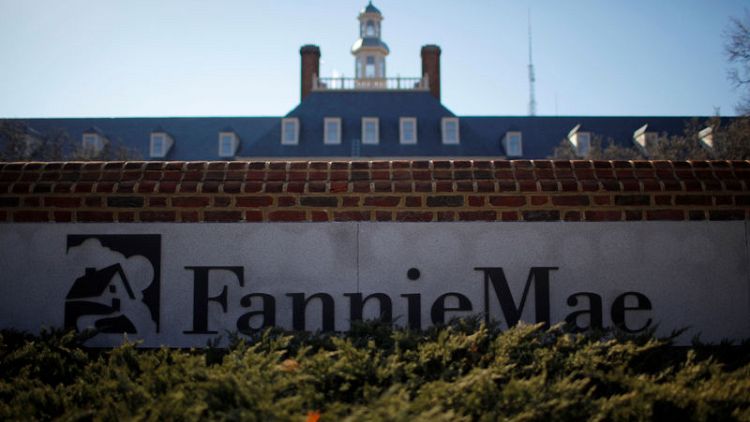By Pete Schroeder
WASHINGTON (Reuters) - Mortgage giants Fannie Mae and Freddie Mac could be returned to the private market at different times, especially if the government moves to float them on the public markets, the head of the U.S. housing finance regulator told Reuters in an interview.
It may be preferable to stagger that process due to the complexities involved in getting the government-backed firms, which have different business models, ready for private ownership, said Mark Calabria, director of the Federal Housing Finance Agency, which oversees Fannie Mae, Freddie Mac and the U.S. housing finance system.
"I'm open to seeing what makes sense...that kind of sequencing hasn't been decided, but obviously if you tried to engineer them both at the same time, you’re depending on more things going right at the same time," he said. "One may be ready before the other, it just depends."
Fannie and Freddie have operated under government conservatorship since they were bailed out during the 2008 subprime mortgage crisis. Washington has struggled for years to devise a plan to safely return the companies, which guarantee over half of the nation’s mortgages, to the private sector.
The prospect of a phased privatisation could present fresh challenges and risks for some shareholders in the firms, since the enterprises could enter the public markets under different economic conditions.
The Trump administration, which is eager to make progress on housing finance reform, last month appointed Calabria, a libertarian economist who previously worked for Vice President Mike Pence, to lead the effort.
Calabria has outlined an ambitious course for removing the two firms from government control, which includes reviewing their business activities, shoring up their accounting, and raising billions in capital.
In a speech on Monday, Calabria said he hoped the companies could start to build capital next year by potentially retaining some profits, which are currently sent to the Treasury Department. But the pair would likely need other sources of capital, with a public offering of some kind being a likely option, he said.
Calabria told Reuters he had not yet determined exactly how much capital the firms would need.
On Tuesday, Freddie Mac Chief Executive Donald Layton estimated his company would need $50 billion, while Fannie Mae would need $75 billion.
The Treasury Department currently holds warrants that represent nearly 80% of the two enterprises. But the two companies also have legacy common and preferred equity securities that trade on the "pink sheets" market, where companies that are not yet listed often trade.
A number of hedge funds have built large stakes in both classes of stock and some have sued the government over their seizure in 2008.
Calabria told Reuters he saw some advantages to staggering the public offerings to avoid saturating the market.
"There's less risk of overwhelming the demand that's in the marketplace," he said. "But again if they are both ready to go and you start to hear very large appetite, that this is something that the market could absorb at once, then that changes the dynamic."
In the event of a staggered privatisation, Calabria said he hoped any lag between the entities would not exceed six months.
(Reporting by Pete Schroeder; editing by Michelle Price and Bernadette Baum)



